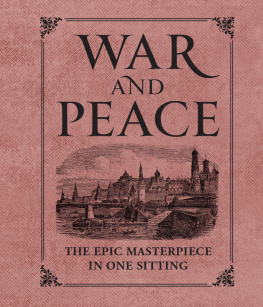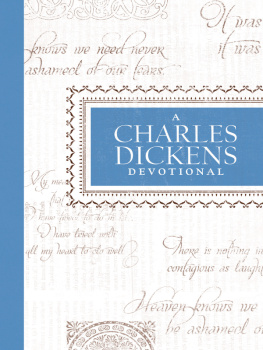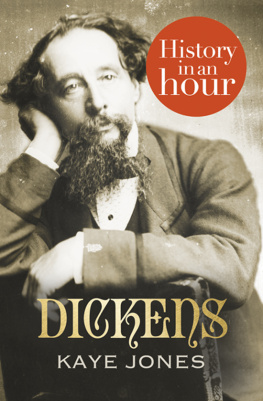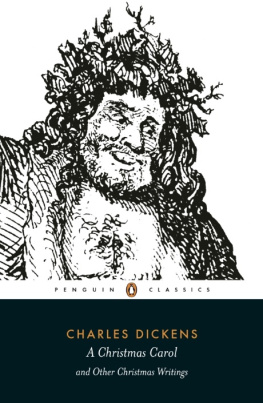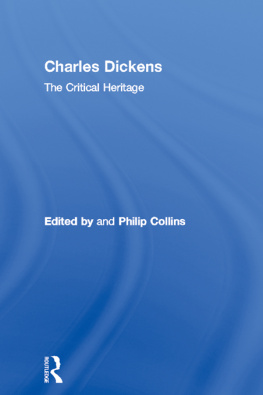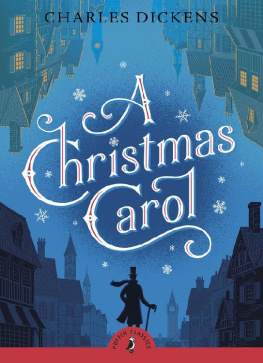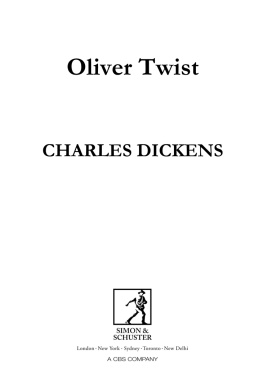
CHARLES
DICKENS

A Running Press Miniature Edition
2012 by Running Press
All rights reserved under the Pan-American and International
Copyright Conventions
This book may not be reproduced in whole or in part, in any form or by any means, electronic or mechanical, including photocopying, recording, or by any information storage and retrieval system now known or hereafter invented, without written permission from the publisher.
The proprietary trade dress, including the size and format, of this Running Press Miniature Edition is the property of Running Press. It may not be used or reproduced without the express written permission of Running Press.
9 8 7 6 5 4 3 2 1
Digit on the right indicates the number of this printing
Library of Congress Control Number: 2011938031
ISBN 978-0-7624-5323-8
Running Press Book Publishers
A Member of the Perseus Books Group
2300 Chestnut Street
Philadelphia, PA 19103-4371
Visit us on the web!
www.runningpress.com
CHARLES
DICKENS

THE COMPLETE NOVELS
IN ONE SITTING
By Joelle Herr
RUNNING PRESS
PHILADELPHIA LONDON
CONTENTS
E ven if youve never actually read a book by Charles Dickens, youre probably familiar with some of the characters he created: Ebenezer Scrooge, Oliver Twist, David Copperfieldover the past 150 years, these literary figures have become indelible pop culture icons.
Though its true that his books have never gone out of print since their original publication, to say that the novels of Charles Dickens are timeless doesnt feel quite right given the fact that the time period in which they take place is practically a character in itself. Who doesnt automatically associate Dickens with the dank, rough-and-tumble streets of London during the gritty days of the Industrial Revolution? The foundation of Dickenss works, however, rests firmly in the human experience, which transcends both time and place in the form of characters who are still relatable today, more than a century after they were written.
Lets face it, not many of us have the timeno matter how intrigued we areto read all of Dickenss novels. Several of them clock in at around a thousand pages! Thats where this book comes in handywhether you want to get to know his collection of classics in a hurry or youre in search of a refresher course. Dont let its diminutive size deceive you. In this compact tome, youll find summaries of all twenty of Charles Dickenss novels, along with some contemporary character descriptions, illustrations, and opening linesefficiently organized for either digesting small chunks of information at a time or devouring the entirety in a single sitting.

B efore we dive in, lets take a look (also somewhat condensed) at the life of Charles Dickens. As with many writers, his experiences greatly influenced the plots, themes, and characters of his works.
Charles Dickens was born in Portsmouth, England, on February 7, 1812, the second oldest child of John and Elizabeth Dickens. The family moved to London when Charles was nine years old. His father was not very good with the family finances and was sent to debtors prison when Charles was only twelve. While the rest of his family joined his father in prison, Charles spent three months working in a boot-blacking factory pasting labels on jars. It was a miserable time in the young boys life.
After receiving an inheritance, Charless father was released from prison, and Charles was enrolled in a private school for three years. At the age of fifteen, he began working as a clerk in a law office, later deciding to become a freelance journalist reporting on various court proceedings. Near-farcical courtroom scenes detailing the absurdity and bureaucracy of the London judicial processes pop up in many of Dickenss works.
Dickenss first story was published in 1833, and his first novel, The Pickwick Papers, was serialized in 1836. That same year he married Catherine Hogarth, with whom he had ten children. Over the course of the next thirty years, he became one of the most prolific and best-selling writers of the Victorian Era.
In his later years, he embarked on several reading tours, including two in the United States. In 1857, he met and fell in love with Ellen Ternan, an actress, eventually separating from his wife the following year.
After a series of strokes, Dickens passed away on June 9, 1870, at the age of fifty-eight. An epitaph written at his death sums it up perfectly: He was a sympathiser with the poor, the suffering, and the oppressed; and by his death, one of Englands greatest writers is lost to the world.
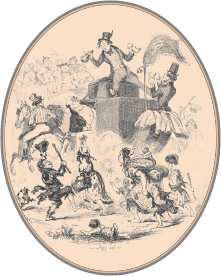
(Serialized 183637)
The first ray of light which illumines the gloom, and converts into a dazzling brilliancy that obscurity in which the earlier history of the public career of the immortal Pickwick would appear to be involved, is derived from the perusal of the following entry in the Transactions of the Pickwick Club....
T he Pickwick Papers was Dickenss first novel, published when he was in his mid-twenties. The story follows the four members of the Pickwick Club on their adventures as they travel the English countryside. Naturally, they encounter a colorful cast of characters along the way, resulting in misunderstandings, lawsuits, imprisonment, and other hilarities, all of which they document in the papers of the title.
MAJOR CHARACTERS
Samuel Pickwick: The kind, elderly, and portly protagonist, founder of the Pickwick Club.
Nathaniel Winkle: A member of the club who fancies himself a good sportsman but is actually just the opposite.
Augustus Snodgrass: A member of the club who fancies himself a fine poet.
Tracy Tupman: An elderly, overweight, and generally unappealing member of the club who fancies himself a ladies man.
EXCERPT FROM CHAPTER 28:
F rom the centre of the ceiling of this kitchen, old Wardle had just suspended, with his own hands, a huge branch of mistletoe, and this same branch of mistletoe instantaneously gave rise to a scene of general and most delightful struggling and confusion; in the midst of which, Mr. Pickwick, with a gallantry that would have done honour to a descendant of Lady Tollimglower herself, took the old lady by the hand, led her beneath the mystic branch, and saluted her in all courtesy and decorum. The old lady submitted to this piece of practical politeness with all the dignity which befitted so important and serious a solemnity, but the younger ladies, not being so thoroughly imbued with a superstitious veneration for the custom, or imagining that the value of a salute is very much enhanced if it cost a little trouble to obtain it, screamed and struggled, and ran into corners, and threatened and remonstrated, and did everything but leave the room, until some of the less adventurous gentlemen were on the point of desisting, when they all at once found it useless to resist any longer, and submitted to be kissed with a good grace.... As to the poor relations, they kissed everybody, not even excepting the plainer portions of the young lady visitors, who, in their excessive confusion, ran right under the mistletoe, as soon as it was hung up, without knowing it!...
Next page

